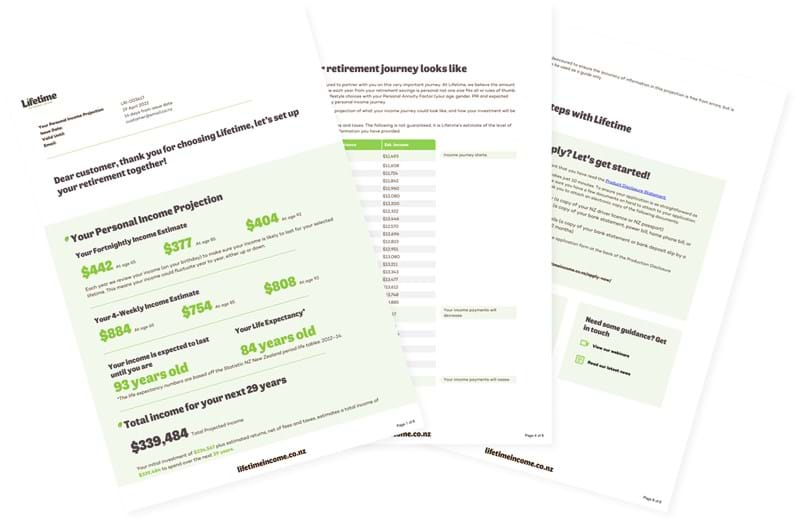Nov 14 2022
Opportunity knocks. Everyone knows that markets are down, as inflation and interest rates are up.
While that may seem like a horror and less like an opportunity, for astute investors, those who are prepared to be patient and have faith in the future, there is indeed an opportunity to profit. That opportunity is to plan to invest during this slump – and that should be done by dollar cost averaging.
I have lived and invested through four major market slumps in my lifetime, the fall that we are currently seeing is the fifth. While I was too frightened to invest during the 1987 share market crash, I learned my lesson and invested during the others.
Inflationary pressures continue to spread despite energy prices easing in recent months. There has been some hope that the decline in oil prices would wash through other sectors of the economy, but that has not been the case so far. Food inflation continues to surge. New Zealand’s annual food inflation of 8.3% was surpassed by annual food CPI in the US over the same period of 11.4% - both shockers
A crash is an opportunity to benefit.
When markets fall and the media are full of negative noise, I find myself almost instinctively falling back on old investing sayings. These sayings often go back a long way in time, and, as such, they bring the wisdom of history.
My prime old investment saying is buy in gloom, sell in boom.
This is a countercyclical idea – buying when others are selling and selling when others are buying is the right thing to do because you are buying cheap and selling dear.
In the early 19th Century, Baron Rothschild had another, more dramatic way of expressing this when he supposedly said that you should buy when there is blood in the streets (he made a fortune investing at the time of the Battle of Waterloo). In saying this, Rothschild was saying that the worse things seem, the better the buying opportunity. (In fact, the full quote from the Baron is thought to be buy when there is blood in the streets, even if the blood is your own!)
Things seem fairly bad at the moment: there is uncertainty regarding inflation and interest rates, China is exerting itself, COVID-19 is still a threat, and there is war in Ukraine. Little wonder that markets have fallen and keep on falling!
This really does look like a good opportunity to buy.
However, buying in gloom (or when there is blood in the streets) is a lot easier to write than it is to actually do. When the world is in turmoil and markets are down, there is an obvious opportunity to buy cheap investments, but it is not easy to stand against the wall of negative noise to buy when others are selling.
You are excused for feeling scared!
A bad economy, negative comments from the commentariat, and most people selling with fear may mean your first instinct is to assume the foetal position and hide.
Nevertheless, take courage – the world is probably not heading back to the Dark Ages.
Buying at times like this is the right thing to do; after all, you will be buying bargains, investments that are cheap. Markets will eventually recover (they nearly always do), and those cheap investments will give good returns. If you bought during this turmoil, you could be reasonably confident that in (say) five years, you would be very glad you did!
And so, if you possibly can, you should resolve to become a buyer. The problem for those who do decide to put aside their fears and buy during these gloomy days is when to do it.

Martin Hawes
I think it important that you do not try to pick the absolute bottom of the market.
There is another old saying which underlines this: no one rings a bell at the bottom. This is effectively saying that there is no clear and obvious signal that the bottom has been reached and that it is time to buy; we only know where the bottom was in hindsight. The chances of you being able to buy exactly at the bottom are vanishingly small, and you should not even try.
Instead, I think you should resolve to drip-feed money into investments so that you buy at a time when markets are generally cheap rather than try to make one investment when they are at their very cheapest.
This regular drip feeding into the market over a period of time is called “dollar cost averaging”. It means that instead of trying to get one spectacularly good price, you make a series of investments over the time of a slump and get an average price over the period of the slump. No one knows when the bottom will be reached (be suspicious of anyone claiming to know) nor when the markets will recover – it is therefore better to regularly invest over those bad months.
With this in mind, about six weeks ago I personally started to make weekly investments into one of my investment accounts. I look at this slump not with fear but as an opportunity. I will keep on investing until this slump burns itself out and markets recover – that could be measured in months or years, but whichever it is, I will use the time to buy cheap investments.

